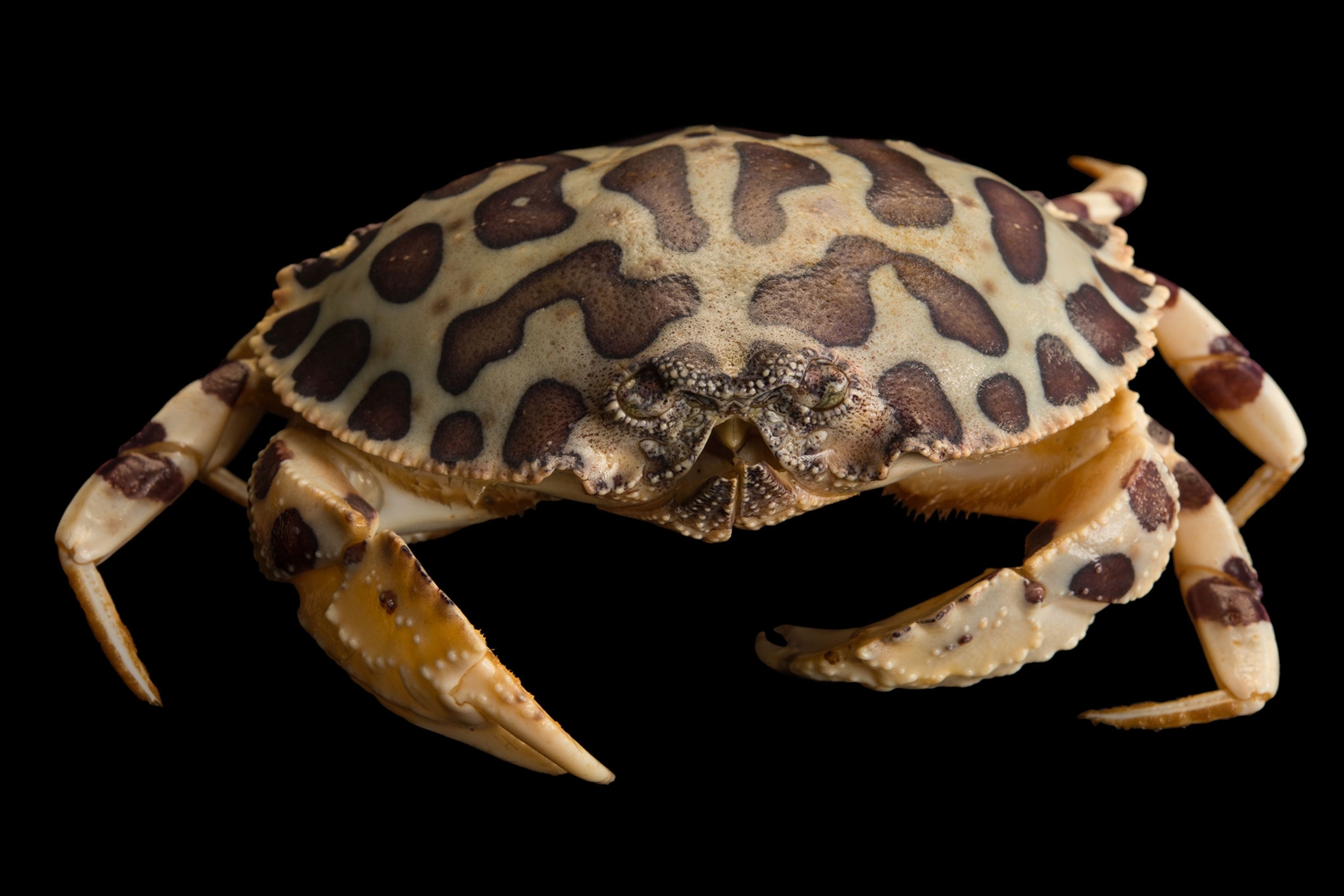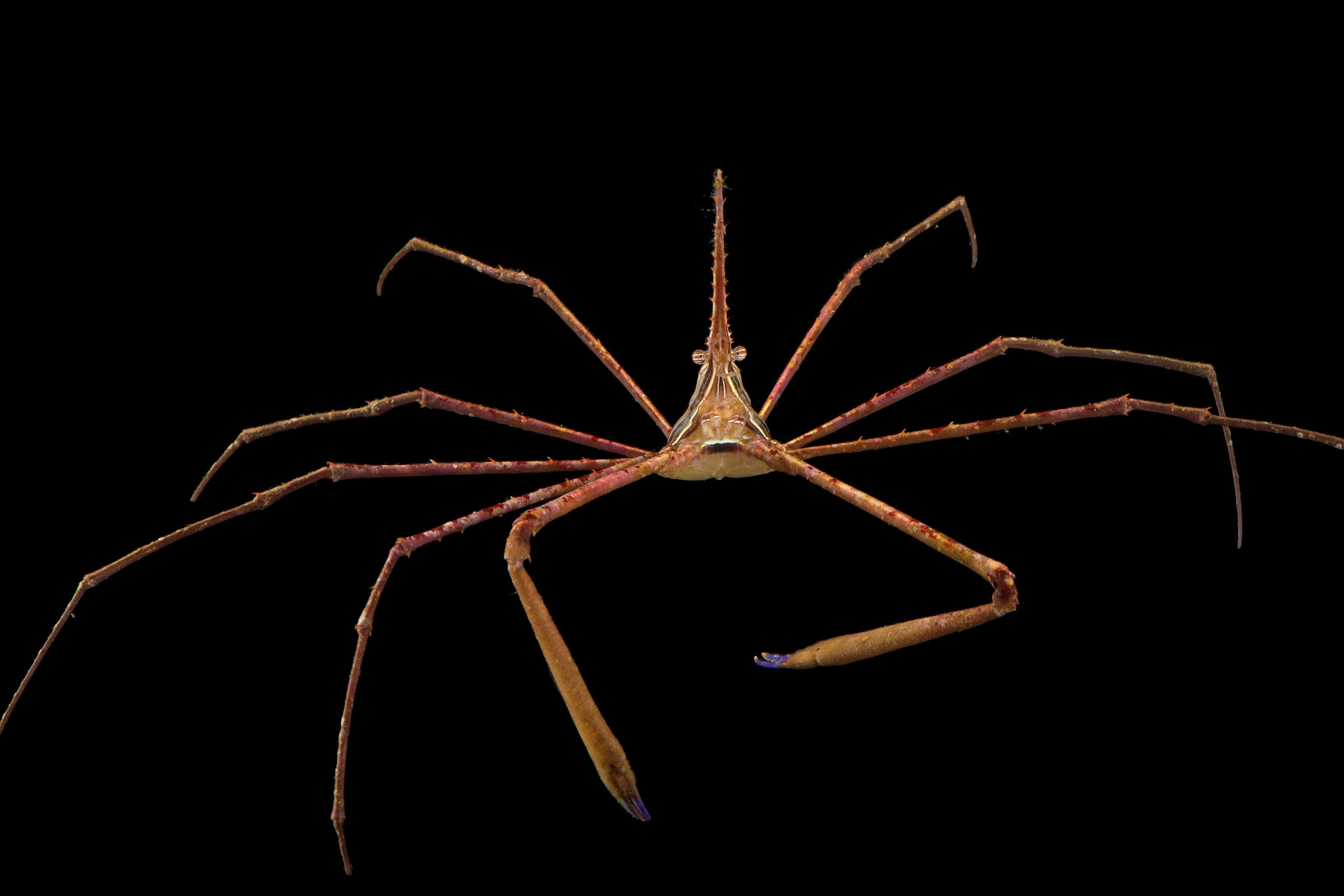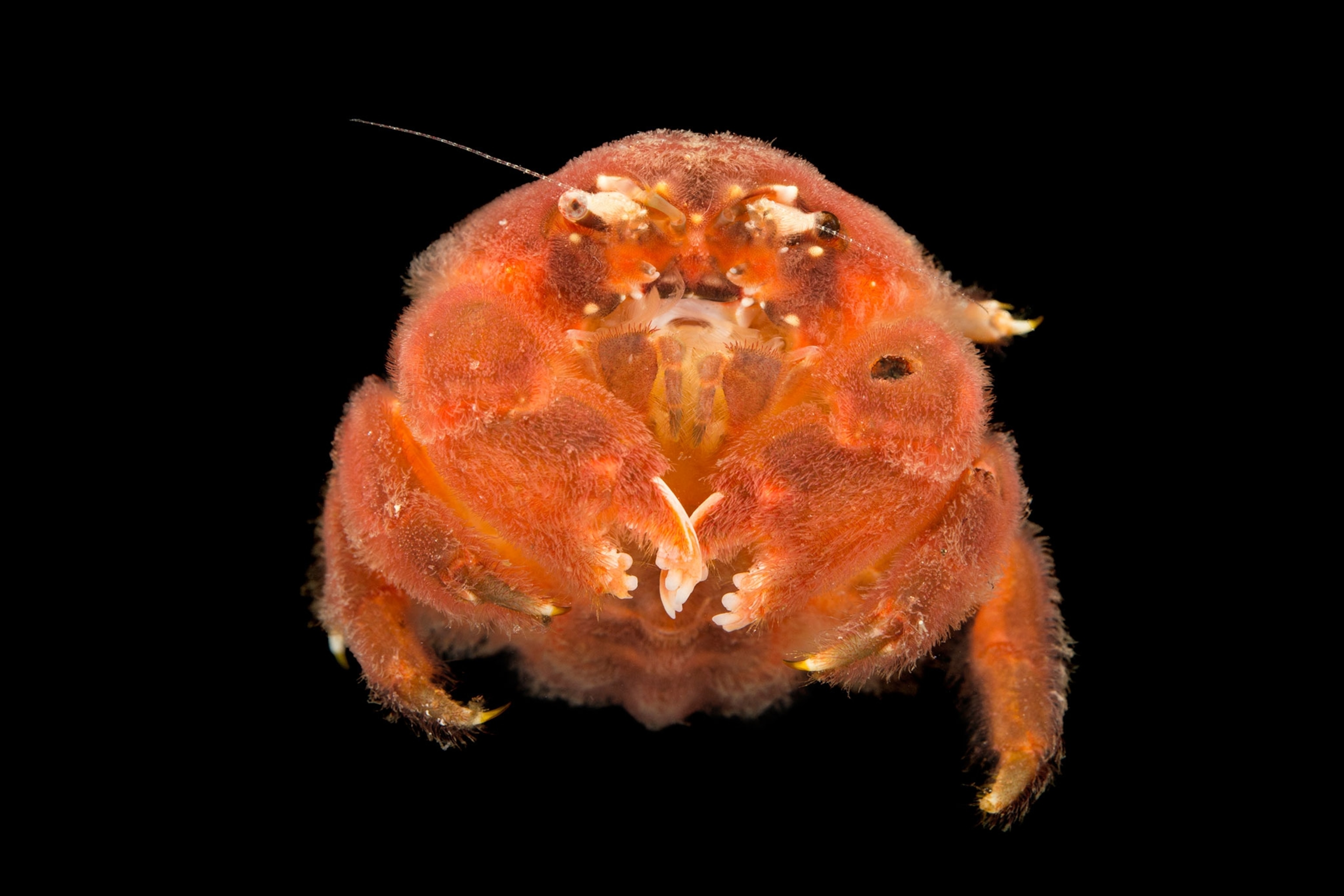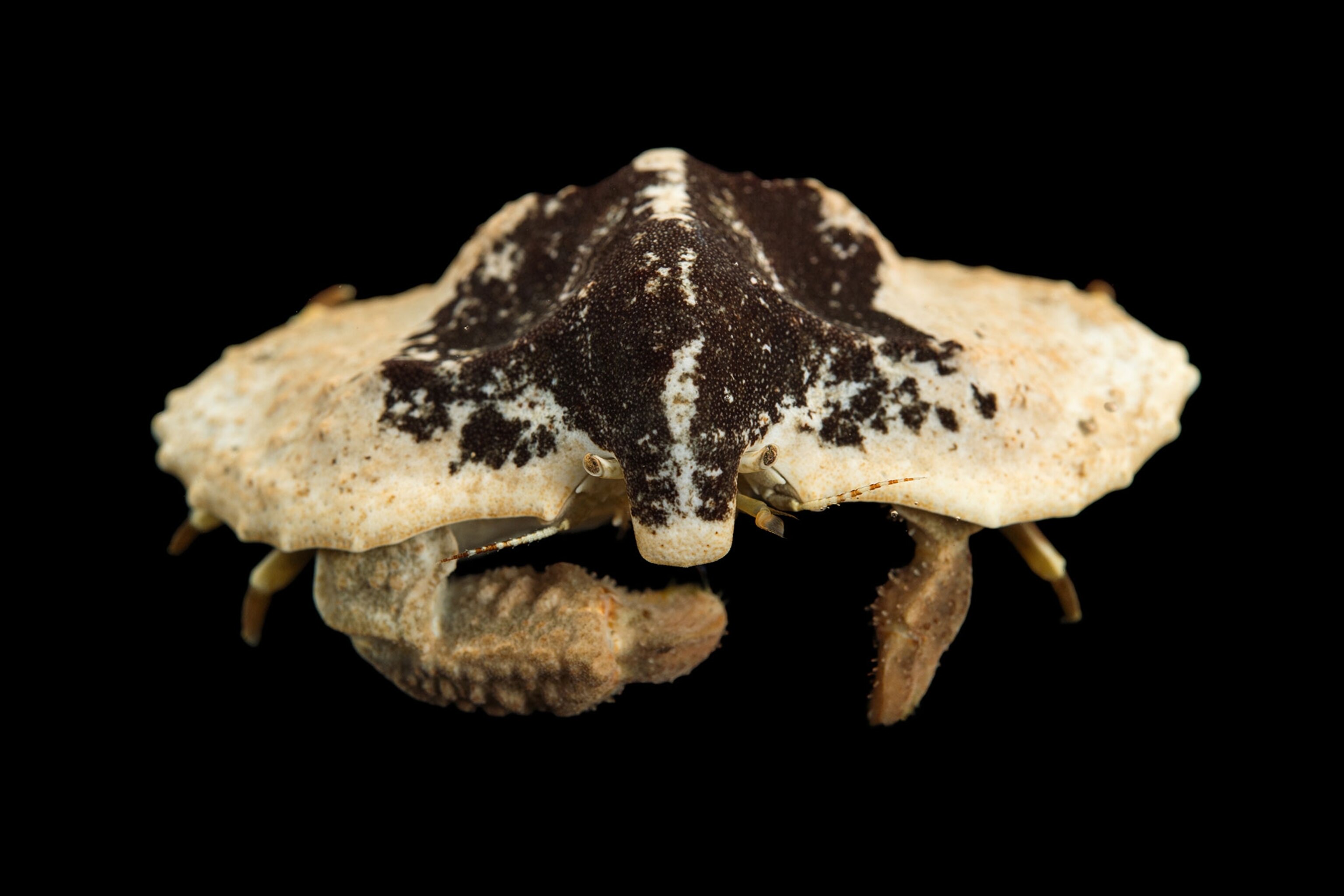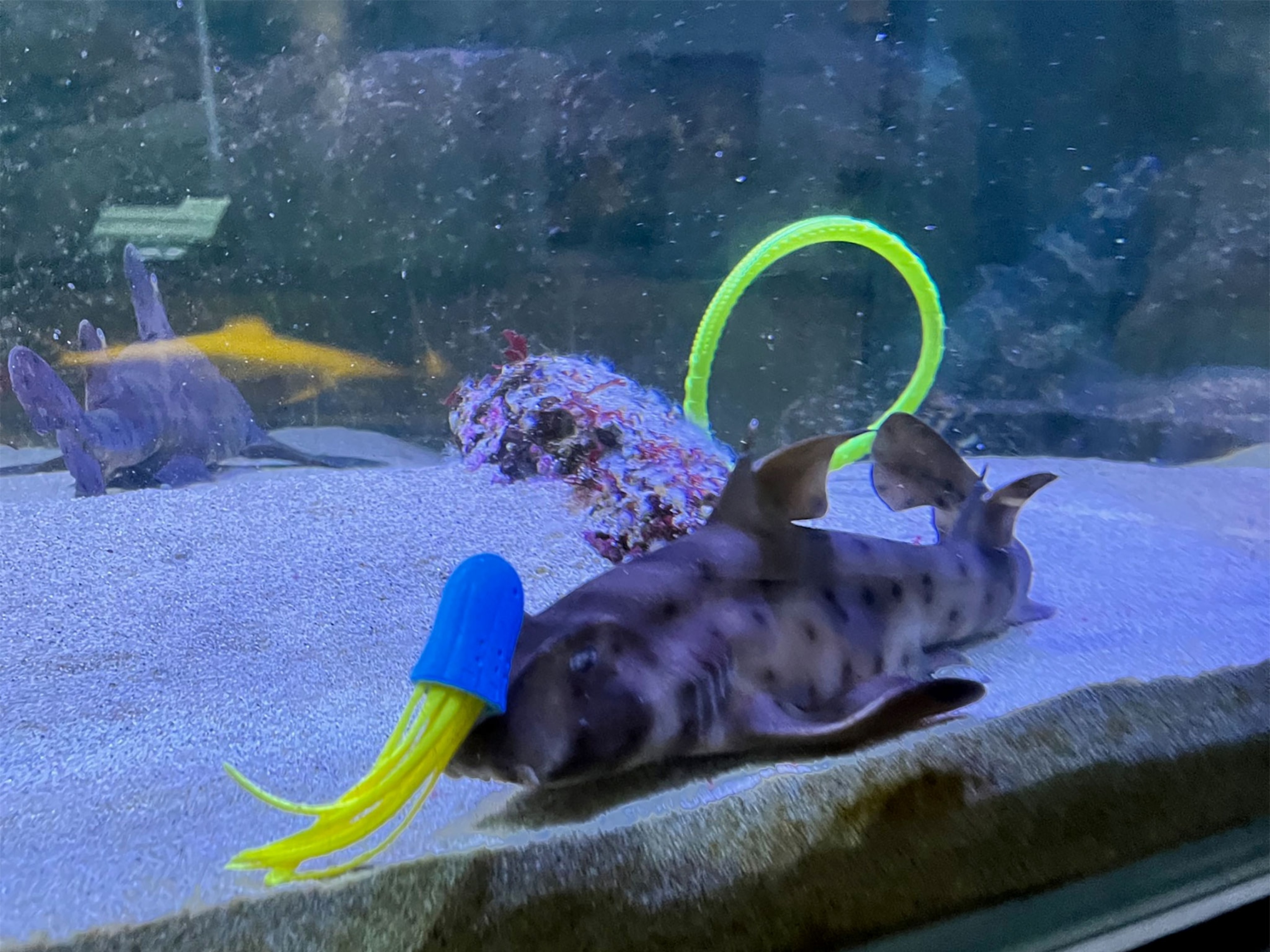
Absolutely Crabulous: Why Some Crabs Get Dressed Up
Covering themselves in everything from algae to urchins, crabs know how to accessorize for safety.
Most of us tend to see crabs as just a great set of legs, but they go to all kinds of trouble to be spectacular.
The 7,000 species of crabs on earth have looks ranging from scary to cute to surreal. Some are fashionistas, and some make pretty strange fashion choices—like toxic wigs.
Charmed and surprised by their ensembles, we couldn’t help wondering, “Why is it that crabs sometimes dress up?”
Who Are You Wearing?
The aptly named sponge crabs of West Africa and the Mediterranean wear sponges on their heads and bodies, not to attract attention but to deflect it.
The sponges camouflage the crabs from predators, with some sponge species also emitting toxic or noxious chemicals, making the crab unappealing to predators.
Sponge crabs use their back pair of legs “to hold an intact sponge over their body,” says Jay Stachowicz, a marine ecologist at the University of California at Davis. They “often shape the sponge to fit over a large part of their carapace,” or hard exoskeleton.
Decorator crabs, on the other hand, “have hooked hairs all over their carapace that act like Velcro to hold any sort of decoration in place,” Stachowicz says.
What they wear depends on the species of crab.
“Some are very picky,” he says. They “protect themselves from predators by using toxic algae or stinging sea anemones,” which, like sponges, can both disguise the crab and deter predators.
Others “use materials in proportion to what they find in the environment,” so they simply blend in.
Hermits with Housemates?
Moss crabs of the southwestern U.S. are “the most extreme decorator,” Stachowicz says, carpeting themselves with anemones and bryozoans, tiny moss animals that can look plant-like, furry, or gelatinous. (See more bryozoans in “Mysterious, Brain-Like Blob Found in Lagoon.”)
Carrier crabs of the Indo-Pacific and East Africa have specialized back legs that let them hold the weight of a protective sea urchin when they go out for a stroll. Some urchins have venomous spines, but who would want to test if this is one of them? (Watch: Carrier Crab Uses Spiny Urchin as a Shield.)
And then there’s the pea-sized pea crab, which doesn’t bother with costumes at all. It just hides inside another animal.
Pea crabs live inside bivalves such as mussels and oysters, says Judith Weis, marine biologist at Rutgers University and author of Walking Sideways: The Remarkable World of Crabs.
Depending on the species they can be either commensal, a harmless passenger, or parasitic, taking food the mussel could be using and leaving the host a little leaner. (Video: Watch: Crab Tickles Shellfish for Hours to Find Love)

Finally, hermit crabs have a tough exoskeleton on their front half and protect their softer back half by finding discarded snail shells to live in. Their soft bodies are coiled to fit in the spiraling shells, though sadly some find less-fitting homes—like humans’ trash.
As they grow, Weis says, they need to find larger shells, “just like growing children needing bigger shoes.”
Some hermits will even double up by attaching an anemone to their snail shell. If they move to a new shell, they’ll remove their anemones from their old shells and attach them to new ones, Weis says.
Anemones benefit from the crab’s mobility, which provides it new feeding spots the otherwise stationary critter wouldn’t have.
("Yeti" Crabs Farm Food on Own Arms—A First)
It might also get some table scraps if its crab host “is a sloppy eater,” says Weis.
Cheery Decor
Pom-pom crabs, also called boxer crabs, have small claws in which they carry small anemones, “enabling the crab to defend itself better and take advantage of the food the anemone captures.” (Related: Watch Pom-Pom Crab Fight With Anemone-Tipped Claws.)
And last but not least, the blanket crabs of the Indo-West Pacific are a type of hermit that doesn’t even bother with the shell—they wear just the anemone and can pull it higher or lower over their bodies like a sheet.
Sounds like an awfully snug relationship for a hermit.


